Steve Hendrix
Well-known member
The Fujinon GF Tilt Shift Lenses Are Finally Here!
By Dave Gallagher
Posted September 12, 2023
In Fujifilm, Fujifilm GFX, Fujifilm Tip, News
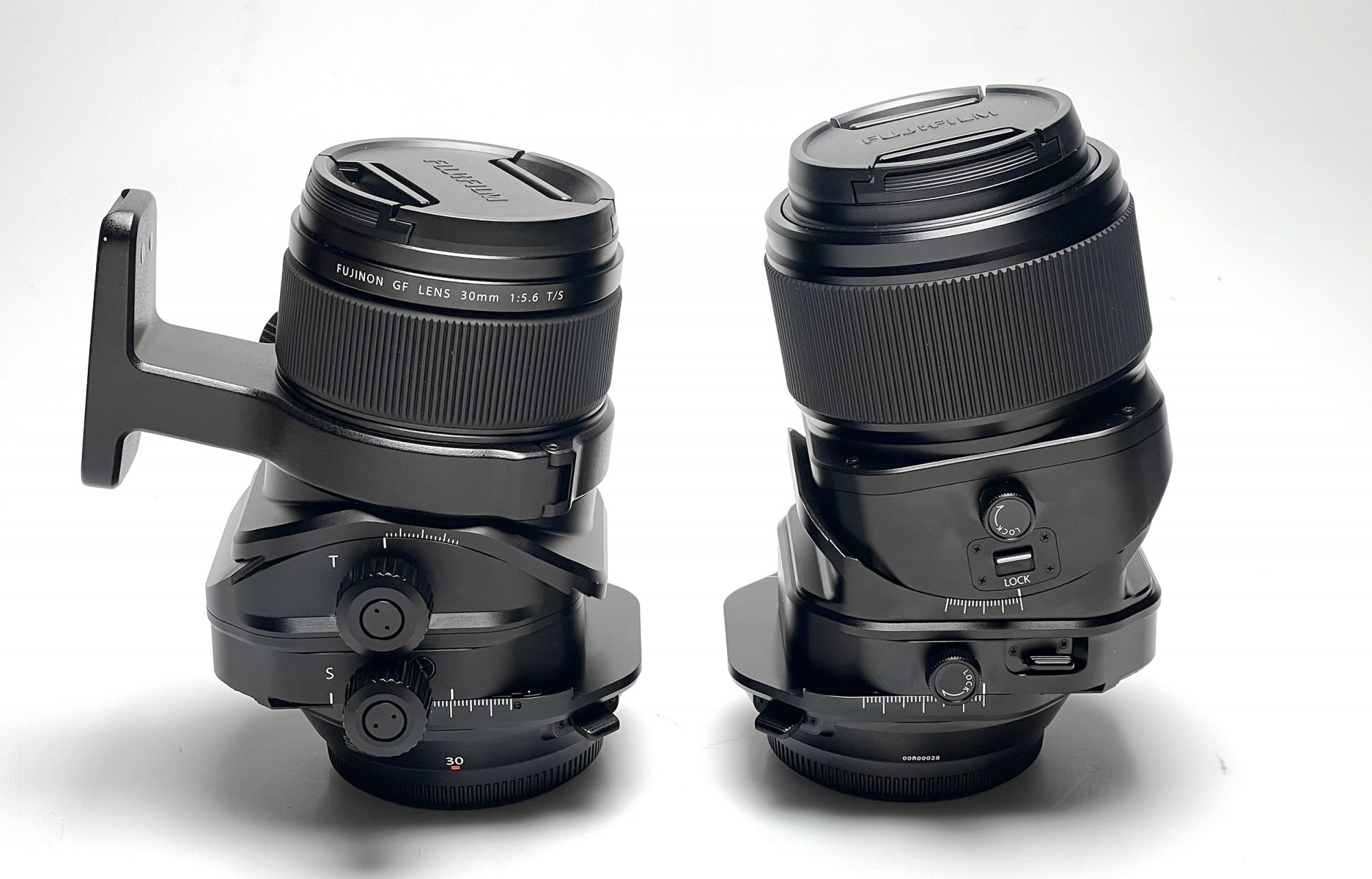
I can’t remember the last time I anticipated a lens release that would impact my market as much as the new Fujinon Tilt Shift lenses. Fujifilm has shocked the photography market over and over again by creating the highest quality extra low dispersion aspherical lenses at an amazing low cost to the consumer. But one glaring hole in their line up has always been the lack of any lenses with movements. This has forced the architectural / table top photographer to either use a different digital camera, attach a digital back to a Cambo view camera, or, at worst, “correct in post.” But alas, this no longer has to be the case. We can now begin taking orders on these two lenses immediately.
Let’s get all the technical data out of the way first. Take a look at the following specs to compare these two long awaited lenses against each other.
Search:
Showing 1 to 14 of 14 entries
THE FEATURES THAT STAND OUT
This is just plain simple. The current crop of T/S lenses fail when combined with today’s high resolution sensors. And yes, we have no issue stating this over and over. If you know anything about Capture Integration, then you know we back up our statements with knowledge and real world testing. We have been amazed at just how all of the top brand’s T/S lenses fail when we compare them to a fixed lens shifted on a body with movement. And they don’t just fail, they fail in plummeting ball of flames.
THE TEST
We performed a very simple panoramic 3 image stitch with a Canon R5 and a Fujifilm GFX 100s. The bodies are in the same exact location using the same tripod mount. Below are the specs for each body


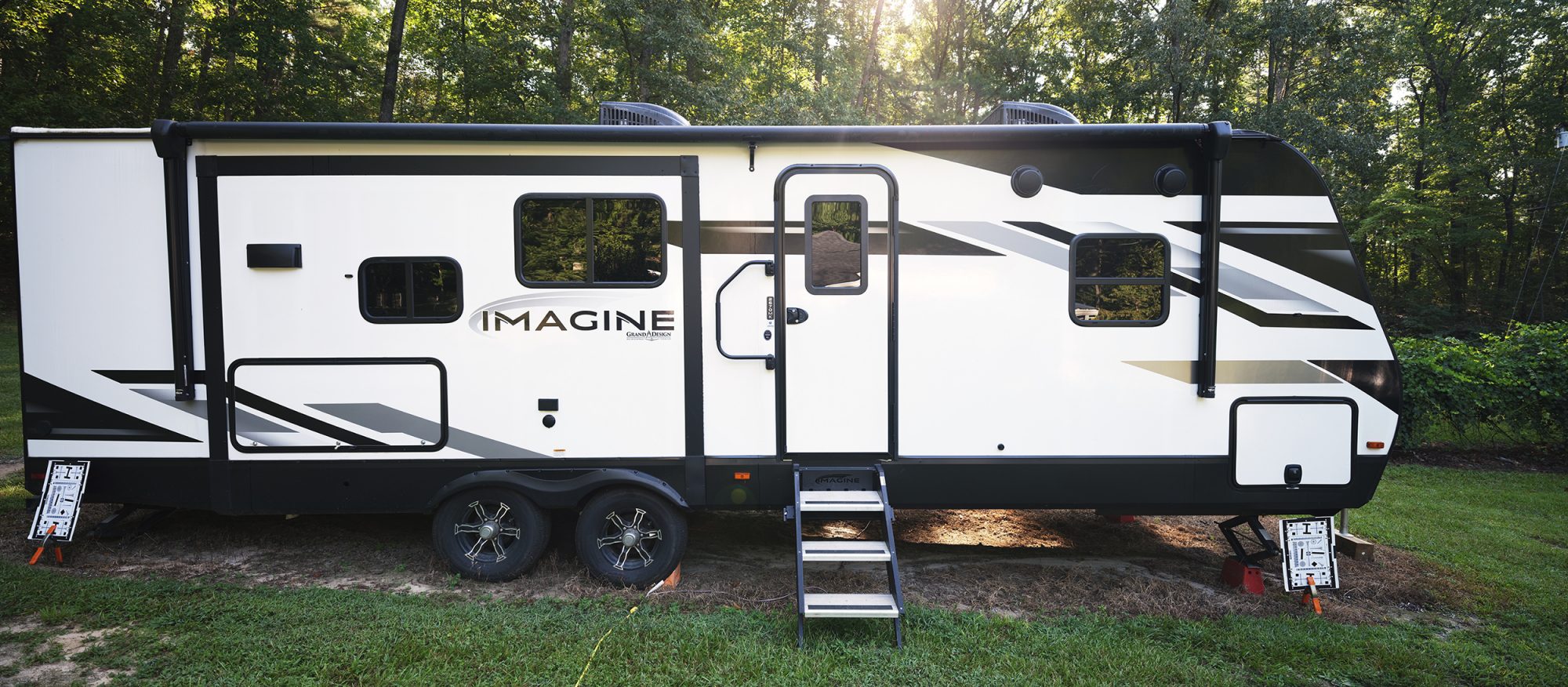 Fuji GFX 100s with GF 30mm T/S
Fuji GFX 100s with GF 30mm T/S
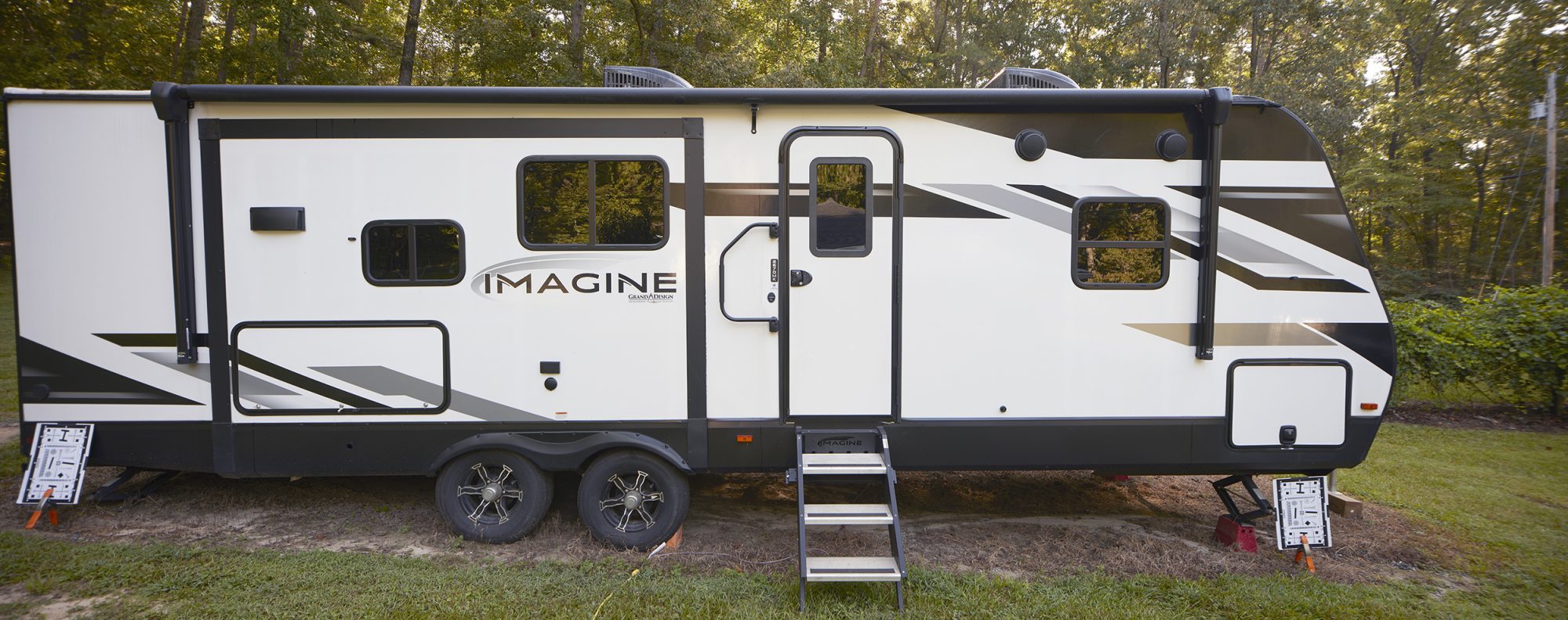 Canon R5 with 24mm T/S II
Canon R5 with 24mm T/S II
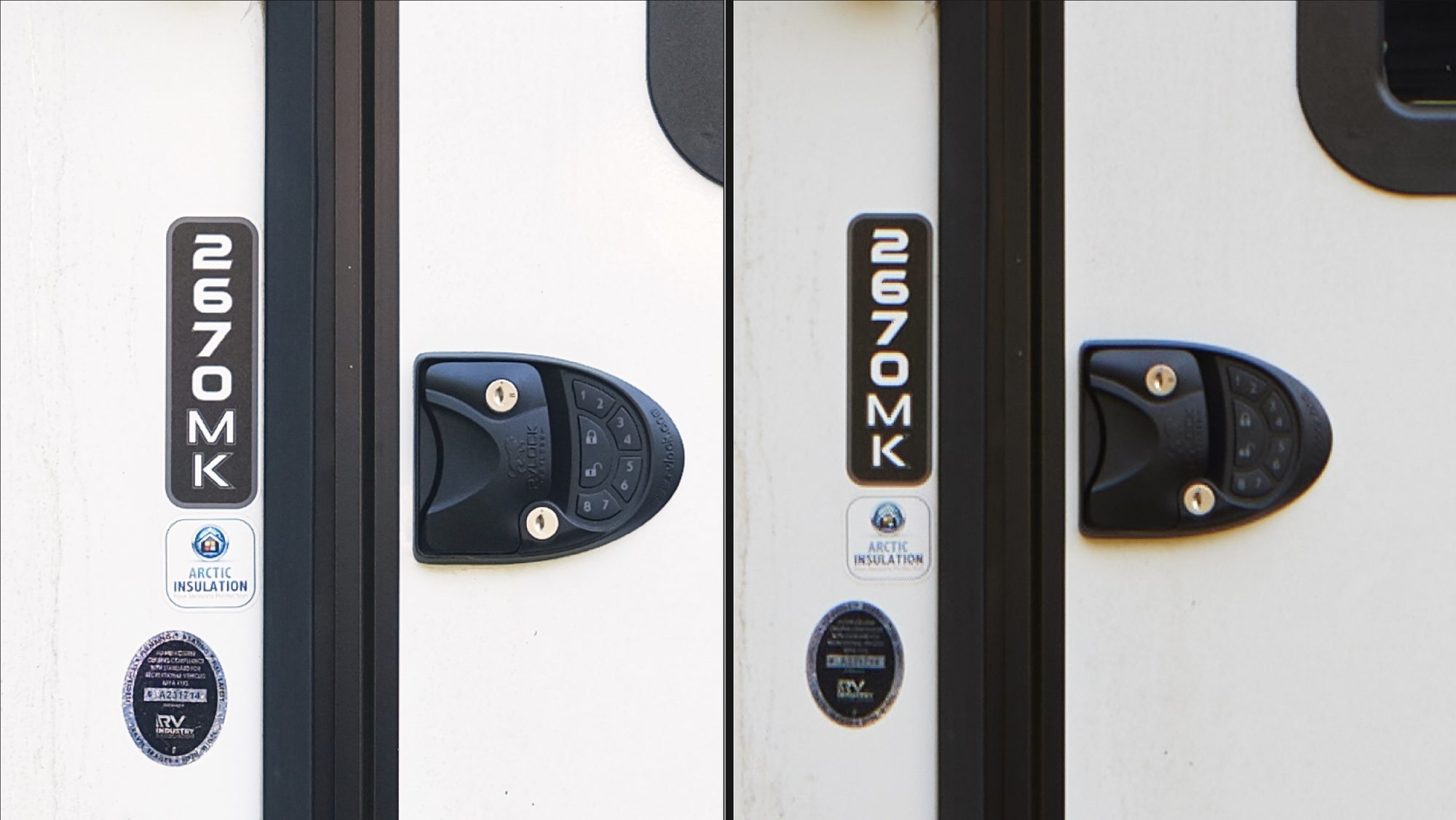 Fujifilm on the left and Canon on the right
Fujifilm on the left and Canon on the right
At the center, these two images show a megapixel resolution difference. That is all. You can’t expect a 45mp Canon Sensor to resolve what a 100mp Fujifilm sensor can resolve. Both images were as sharp as to be expected of these two systems. The Canon file resolved as we thought it would and is suitable for many lower resolution needs.
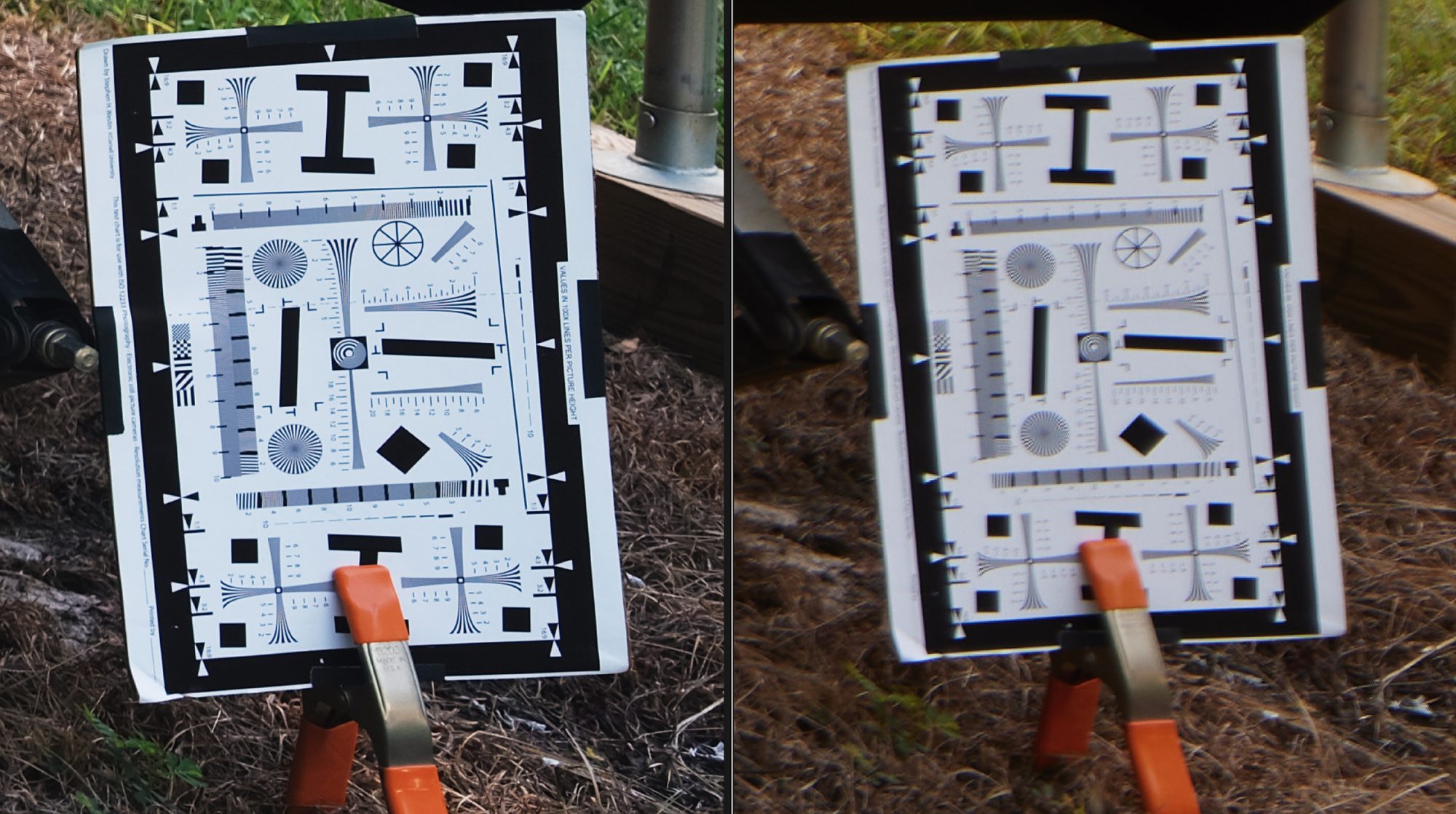 Fujifilm on the left and Canon on the right
Fujifilm on the left and Canon on the right
The focus chart on the right was not positioned all the way to the end of the frame for either body. At this point we can see both a resolution limitation and a lens failure. The Canon file shows the beginning of a radial blur issue that we see with every single Canon T/S lens. This issue can produce a decent image and many don’t even recognize that their lens has an issue. But remember, the Canon 24mm T/S II is on the front of a 45mp body. Add this lens to a 100mp body and the results become unacceptable.
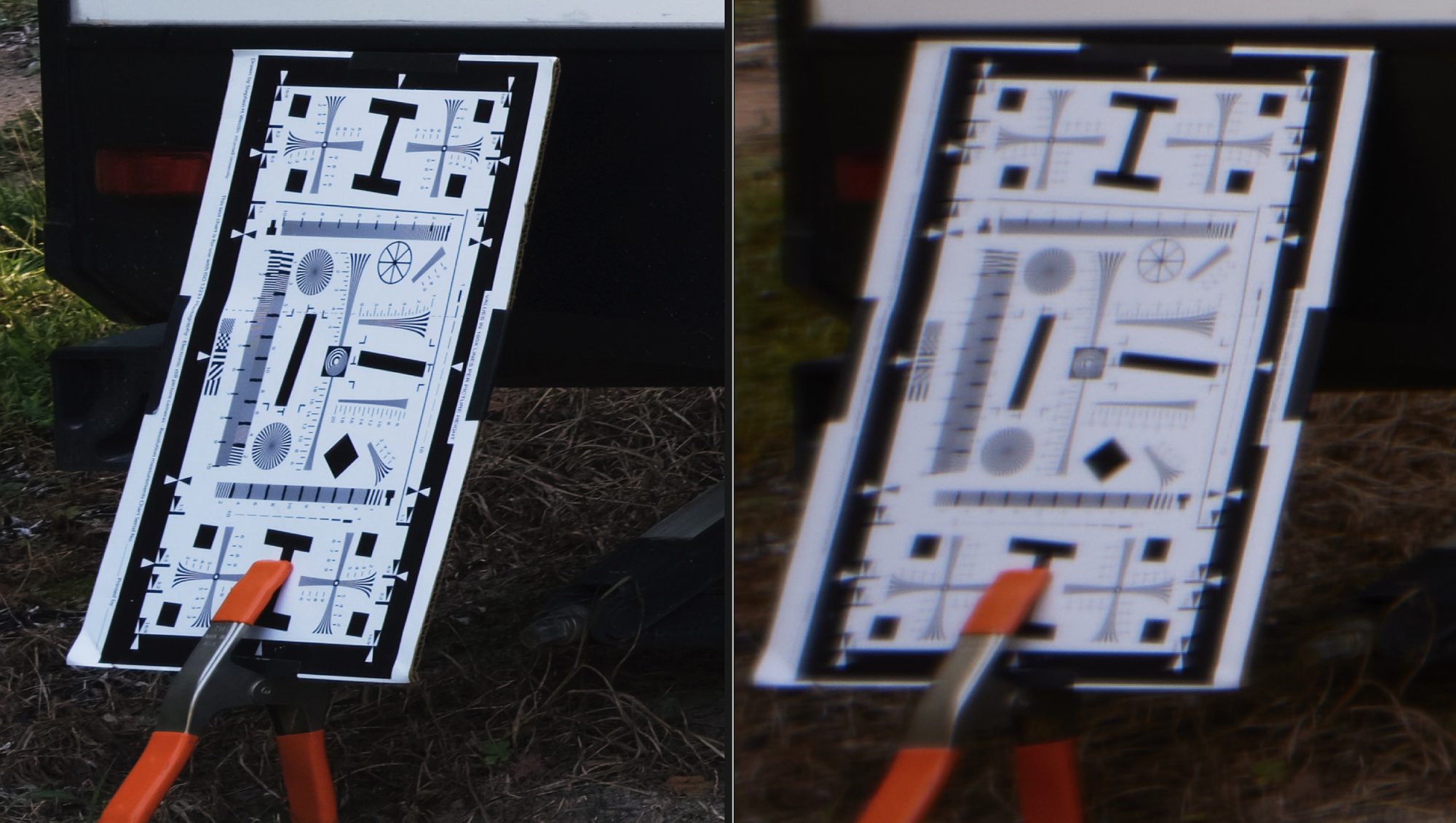 Fujifilm on the left and Canon on the right
Fujifilm on the left and Canon on the right
When the focus charts on the left are imaged with the maximum shift on each camera body/lens combination, the true depth of the problem is illustrated. The Canon system has both radial blur and severe distortion. And it shows that this body lens combination is not linear. One side is severely worse than the other. We at CI see these issues daily when customers finally decide to move up from 35mm DSLR/Mirroless systems to the higher quality medium format capture systems. The knee jerk reaction is that “we must have a bad lens” and I assure you that all of our tests with multiple Canon lenses show this same issue. Yes, some lenses are more extreme than others. And this is what led us to liquidate our full dslr inventory a few years back.
IT CAN’T BE THIS MUCH OF A DIFFERENCE…
I love the quality of my iPhone. It takes a darn good image. But when I compare it to an actual interchangeable-lens digital camera, it pales in comparison. By itself is is great! Side by side, I can see the real difference.
And I can unequivocally state that this is the same situation here. 35mm systems fail when compared side by side to medium format sensors on view cameras, tech cameras, or now, a native T/S lens. In my experience, T/S dslr glass has failed for years. Many photographers use them because it’s all that has been available or that it is just “good enough” for their clients needs. If you want to know what I think about that “good enough” mentality, then do a search of our website for “good enough”. It’s an enjoyable read.
THANK YOU FUJIFILM
We are thrilled to have these high quality lenses available to our Fujifilm customers today. This medium format combination should be the gateway for many 35mm sensor customers to move up to the quality of medium format capture. If I am a Fuji GFX shooter then I would want the option to be able to pull out one, if not both of these lenses, out of my camera bag when I needed them. We anticipate a very large back order. Please place your order as soon as possible to secure your spot in the queue.
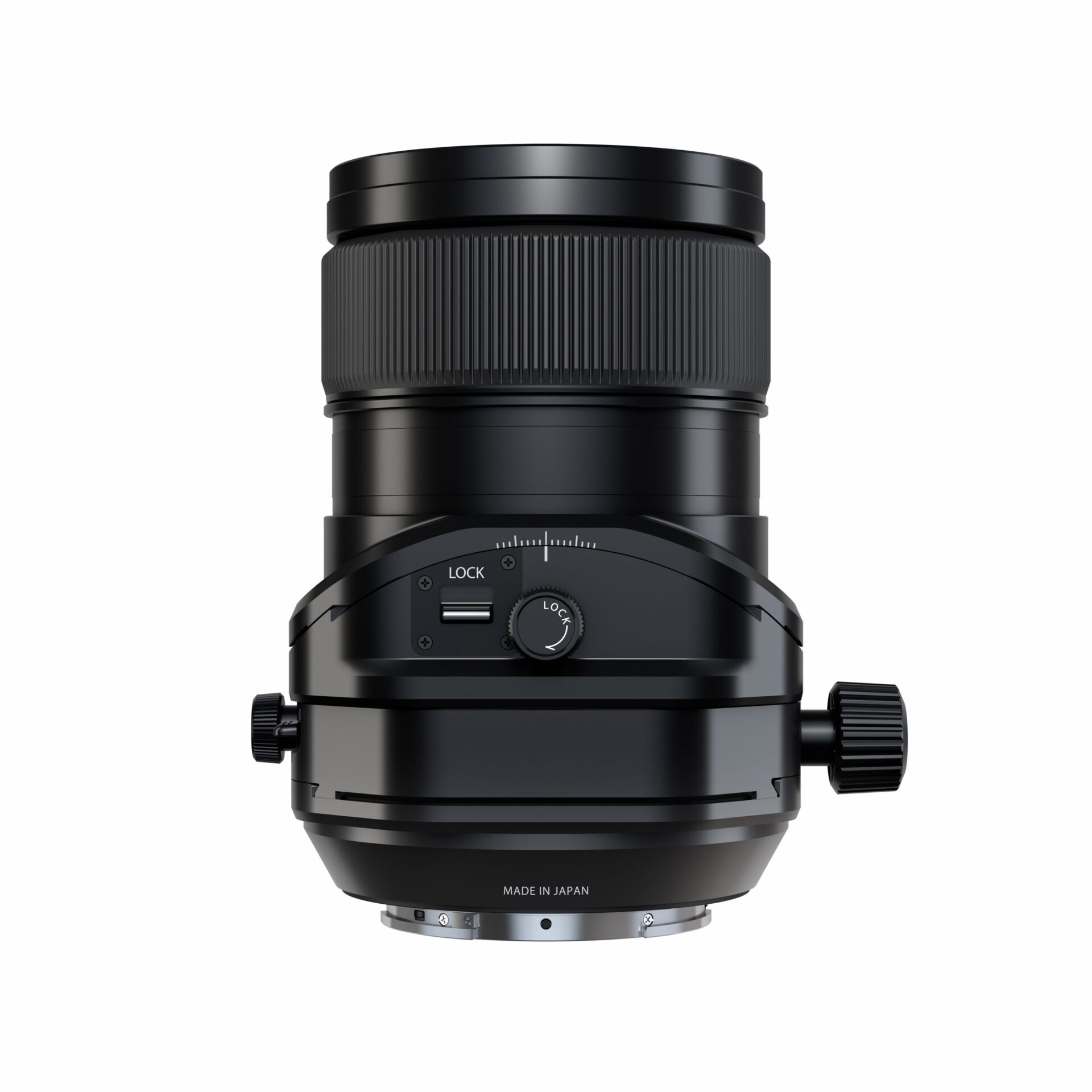
FUJINON GF30MM T/S
ORDER NOW
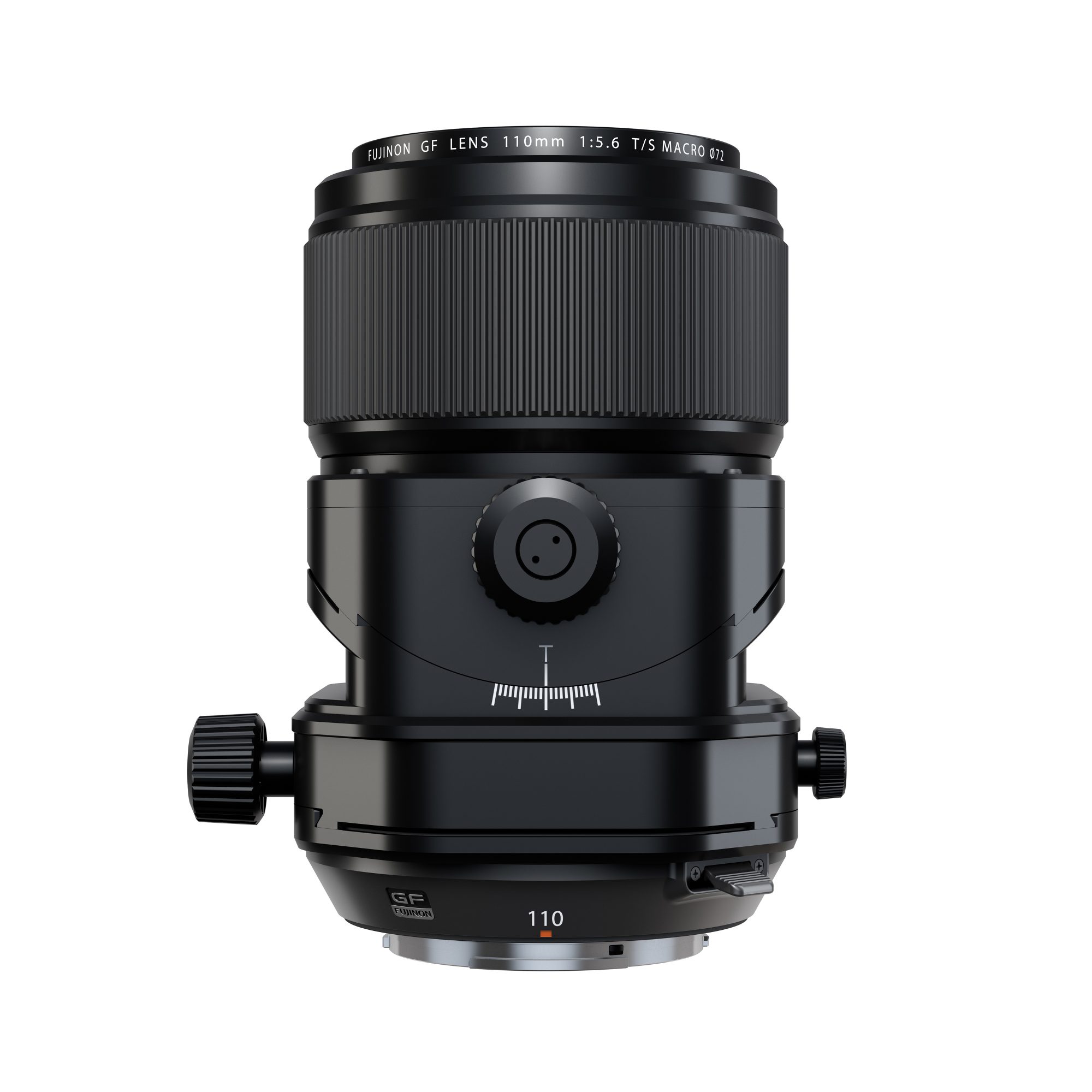
FUJINON GF110MM T/S MACRO
ORDER NOW
By Dave Gallagher
Posted September 12, 2023
In Fujifilm, Fujifilm GFX, Fujifilm Tip, News

I can’t remember the last time I anticipated a lens release that would impact my market as much as the new Fujinon Tilt Shift lenses. Fujifilm has shocked the photography market over and over again by creating the highest quality extra low dispersion aspherical lenses at an amazing low cost to the consumer. But one glaring hole in their line up has always been the lack of any lenses with movements. This has forced the architectural / table top photographer to either use a different digital camera, attach a digital back to a Cambo view camera, or, at worst, “correct in post.” But alas, this no longer has to be the case. We can now begin taking orders on these two lenses immediately.
Let’s get all the technical data out of the way first. Take a look at the following specs to compare these two long awaited lenses against each other.
Search:
| FUJINON GF 30MM F/5.6 T/S | FUJINON GF 110MM F/5.6 T/S MACRO | |
|---|---|---|
| 35mm Equivalent | 24mm | 87mm |
| Elements | 16 | 11 |
| Degrees of Tilt | 8.5° | 10° |
| MM of Shift | 15mm | 15mm |
| Angle of View | 84.7° | 27.9° |
| Focus Distance | 12" | 17.2" |
| Max Magnification | .21x | .5x |
| Filter Size | 105mm | 72mm |
| Height | 5.5" | 5.85" |
| Weight | 2.95 lbs | 2.76 lbs |
| Lens Hood | Yes | No |
| Adapter ring and Tripod Collar | Yes | No |
| Ships on | October 26th | November 30th |
| Price | $3,999.95 | $3,499.95 |
THE FEATURES THAT STAND OUT
- 15mm of Shift in each direction – This is 3mm more than the current “competitive” T/S lenses
- Shift and Rotation angle data stored in the metadata of the image
- Large 85mm images circle that more than covers the 33×44 sensor
- The highest quality optics – 3 GM, 3 ED, and 1 Super ED elements
This is just plain simple. The current crop of T/S lenses fail when combined with today’s high resolution sensors. And yes, we have no issue stating this over and over. If you know anything about Capture Integration, then you know we back up our statements with knowledge and real world testing. We have been amazed at just how all of the top brand’s T/S lenses fail when we compare them to a fixed lens shifted on a body with movement. And they don’t just fail, they fail in plummeting ball of flames.
THE TEST
We performed a very simple panoramic 3 image stitch with a Canon R5 and a Fujifilm GFX 100s. The bodies are in the same exact location using the same tripod mount. Below are the specs for each body

- Fujifilm GFX 100s 100mp Digital Camera body
- Fujinon GF 30mm T/S Lens
- 15mm shift Left, 15mm Shift right, and straight shot
- Stitched in PS 2022
- ISO100, f/5.6, 1/30th second
- No sharpening or retouching – 1 stop of midtone adjustment

- Canon R5 45mp Digital Camera body
- Canon EF to R Lens adapter
- Canon 24mm T/S II Lens
- 12mm Left, 12mm right, and straight shot
- Stitched in PS 2022
- ISO 100, f/5.6, 1/30th of a second
- No sharpening or retouching – 1 stop of midtone adjustment



At the center, these two images show a megapixel resolution difference. That is all. You can’t expect a 45mp Canon Sensor to resolve what a 100mp Fujifilm sensor can resolve. Both images were as sharp as to be expected of these two systems. The Canon file resolved as we thought it would and is suitable for many lower resolution needs.

The focus chart on the right was not positioned all the way to the end of the frame for either body. At this point we can see both a resolution limitation and a lens failure. The Canon file shows the beginning of a radial blur issue that we see with every single Canon T/S lens. This issue can produce a decent image and many don’t even recognize that their lens has an issue. But remember, the Canon 24mm T/S II is on the front of a 45mp body. Add this lens to a 100mp body and the results become unacceptable.

When the focus charts on the left are imaged with the maximum shift on each camera body/lens combination, the true depth of the problem is illustrated. The Canon system has both radial blur and severe distortion. And it shows that this body lens combination is not linear. One side is severely worse than the other. We at CI see these issues daily when customers finally decide to move up from 35mm DSLR/Mirroless systems to the higher quality medium format capture systems. The knee jerk reaction is that “we must have a bad lens” and I assure you that all of our tests with multiple Canon lenses show this same issue. Yes, some lenses are more extreme than others. And this is what led us to liquidate our full dslr inventory a few years back.
IT CAN’T BE THIS MUCH OF A DIFFERENCE…
I love the quality of my iPhone. It takes a darn good image. But when I compare it to an actual interchangeable-lens digital camera, it pales in comparison. By itself is is great! Side by side, I can see the real difference.
And I can unequivocally state that this is the same situation here. 35mm systems fail when compared side by side to medium format sensors on view cameras, tech cameras, or now, a native T/S lens. In my experience, T/S dslr glass has failed for years. Many photographers use them because it’s all that has been available or that it is just “good enough” for their clients needs. If you want to know what I think about that “good enough” mentality, then do a search of our website for “good enough”. It’s an enjoyable read.
THANK YOU FUJIFILM
We are thrilled to have these high quality lenses available to our Fujifilm customers today. This medium format combination should be the gateway for many 35mm sensor customers to move up to the quality of medium format capture. If I am a Fuji GFX shooter then I would want the option to be able to pull out one, if not both of these lenses, out of my camera bag when I needed them. We anticipate a very large back order. Please place your order as soon as possible to secure your spot in the queue.

FUJINON GF30MM T/S
ORDER NOW

FUJINON GF110MM T/S MACRO
ORDER NOW




